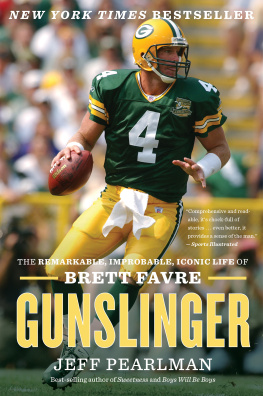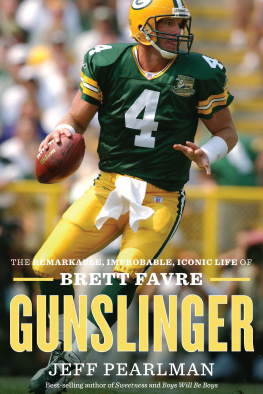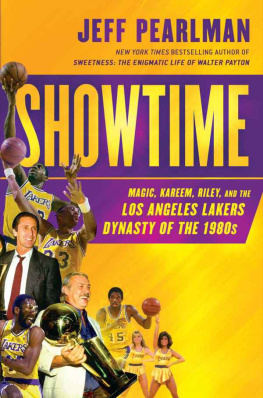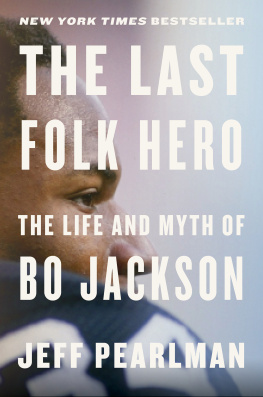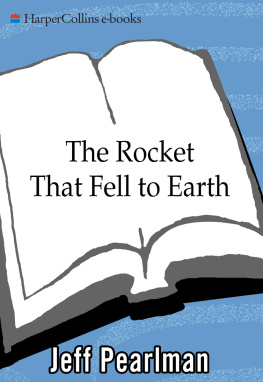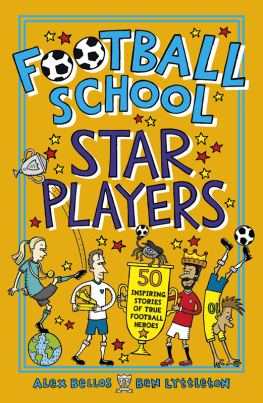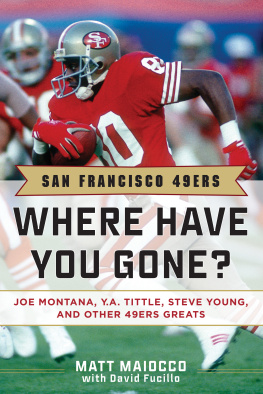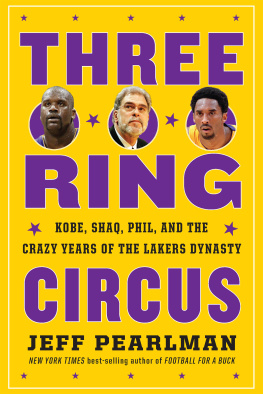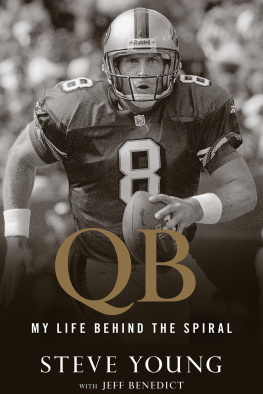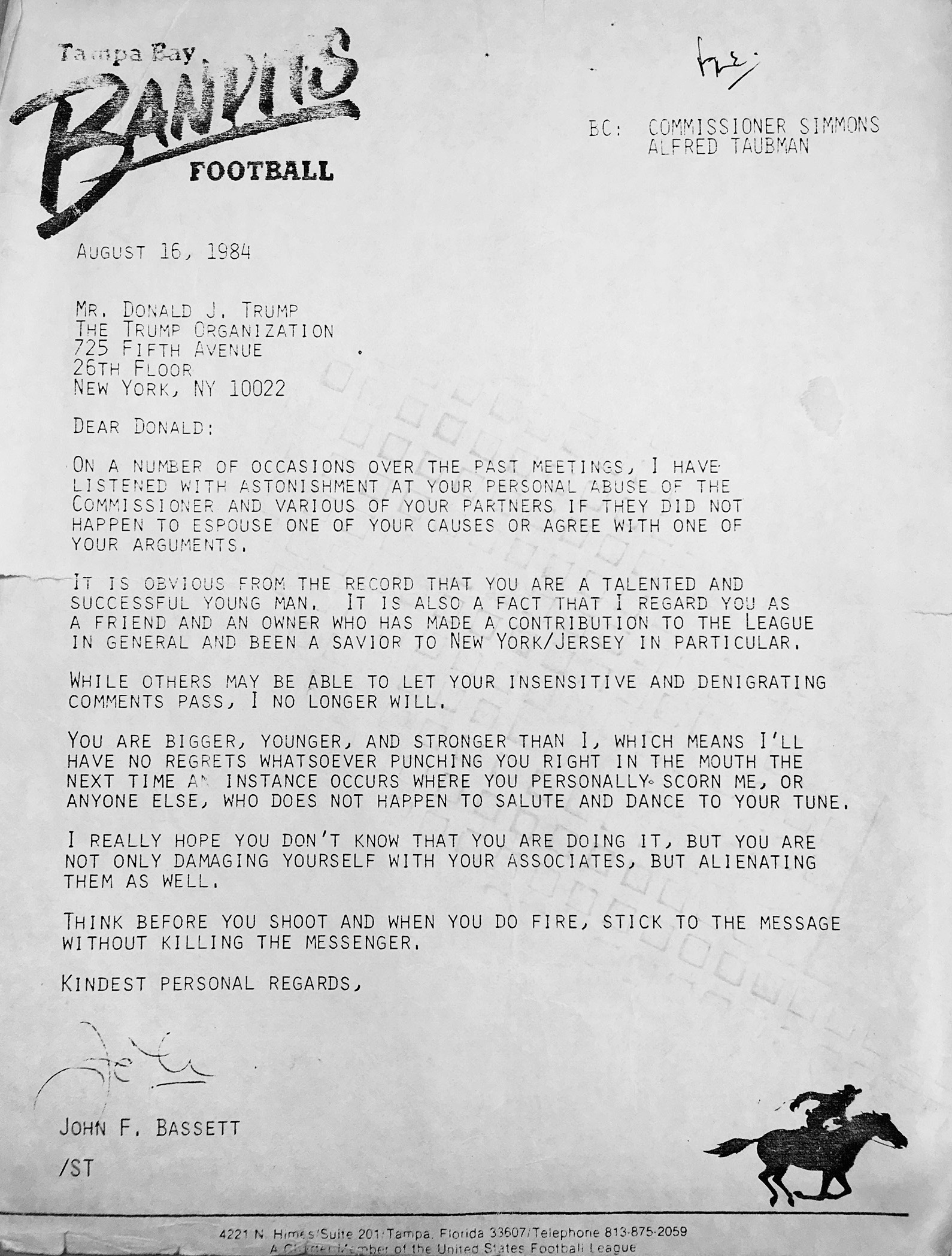First Mariner Books edition 2019
Copyright 2018 by Jeff Pearlman
All rights reserved
For information about permission to reproduce selections from this book, write to or to Permissions, Houghton Mifflin Harcourt Publishing Company, 3 Park Avenue, 19th Floor, New York, New York 10016.
hmhbooks.com
Library of Congress Cataloging-in-Publication Data
Names: Pearlman, Jeff, author.
Title: Football for a buck : the crazy rise and crazier demise of the USFL / Jeff Pearlman.
Other titles: United States Football League | One dollar league.
Description: Boston, Massachusetts : Houghton Mifflin Harcourt, 2018. | Includes bibliographical references and index.
Identifiers: LCCN 2018006360 (print) | LCCN 2018007170 (ebook) | ISBN 9780544453685 (ebook) | ISBN 9780544454385 (hardcover) | ISBN 9780358118114 (paperback)
Subjects: LCSH: USFL (Organization)History. | FootballUnited StatesHistory20th century. | USFL (Organization)Anecdotes.
Classification: LCC GV955.5.U8 (ebook) | LCC GV955.5.U8 P43 2018 (print) |
DDC 796.332/64dc23
LC record available at https://lccn.loc.gov/2018006360
Frontispiece courtesy of the author
Cover design by Brian Moore
Cover images: David Lee / Shutterstock (tee), VitaminCo /Shutterstock (football), Vovan/Shutterstock (money)
Author photograph Noel Besuzzi
v4.0819
To Catherine Mayhew,
who hired a young punk when no one wanted himthen saved his career.
(Sorry about the police scanner.)
I worked for the NFL for several years, so I knew people there. They called the USFL the Useless. They thought that was funny.
Tena Black, Oakland Invaders sales promotions manager
You always joke when youre scared.
Kit Eavensham in Married for His Convenience
Prologue
ERIC HEIGHT WAS a large man.
I hate to open this book in such a shallow manner, but when youre 17 and green, and your radar focuses only upon the painfully obvious, size leaps from the page.
So, yes, Eric Height, my AP English teacher at Mahopac High School, was plump. I actually have an image of the guy permanently embedded in the medial temporal lobe of my brain. He is standing before the class, blathering on about writing, cheeks turning a fruit punch shade of bright red. Spittle soars from his lips, andas a teenager damned to the dreaded front-row seatI skillfully bob, weave, and watch as Jonathan Powell, my pal and the kid situated to my rear, absorbs the moist blow.
Along with the spittle, Mr. Height does this thing when he turns particularly excitable. He marches back and forth before us, arms waving, hands quivering. He desperately wants us to cherish writing in the way he cherishes writing, and insists, on a near-daily basis, that few things are more powerful than word applied to page. He even invents his own organizational system, the Constructive Schematic, that he swears will revolutionize the way people approach literary efforts.
On this particular day, in April 1990, Mr. Height is at his most bombastic. The end of the year is nigh, and the time to assign the final project has arrived. There are 22 of us in the class, and you can feel the vibrations of the collective shudder. Jon Kozak, editor of the student newspaper, sits to my left. Phil Mazzurco, bulky star wrestler, is on my right. I gaze longingly across the room toward Cathy Iannotta, every boys crush, then spin to face Powell, whose face is awash in terror. Pearl, he says, what do you think this guys gon
He is cut off. Mr. Height begins to speak...
You will all be writing a paper of at least 20 pages in length, he says. On the subject of your choosing...
Im pretty sure I dont hear another word.
Back in 2007, when my daughter, Casey, was three, we took her to Disney World for the first time.
It remains one of the greatest experiences of my life, and not because of the overpriced turkey legs or endless loop of brain-melting songs. No, what made the time so special was Caseys wide-eyed amazement over absolutely everything. Is that Sleeping Beauty! Can we ride in the teacups! Do they paint faces! Daddy, the parade is starting! The parade is starting! The parade is starting! Decked out in her special light-blue princess dress and matching tiara, Casey had a quickened pulse and a racing mind, and all I wanted was to bottle up the joy and place it in an eternal lockbox.
Alas, the magic faded. The magic always fades. We grow, we evolve, we experience, we touch, we taste, we feel. Our young minds become exposed to other phenomena, and what once evoked euphoria ultimately brings forth but a shrug.
Some 24 years earlier, in the spring of 1983, I was the giddy one, turned wide-eyed and ecstatic via an image resting before me on a counter inside the Mahopac Public Library. There, on the cover of the March 7 issue of Sports Illustrated, was Herschel Walker, the reigning Heisman Trophy winner from the University of Georgia. A few days earlier, Walker had nuked the news cycle by leaving college after his junior year to sign with a new entity, something called the United States Football League. Because I was but a young boy, not yet 11 and preoccupied with my bike and my basketball and my pals up the street, the intricacies of Walkers decision were beyond my scope. I had no idea there was a new spring football league on the horizon. I had no idea the NFL didnt allow juniors. I had no idea Walker was being compared to Joe Namath, the Alabama quarterback who shocked the nation in 1965 by joining the upstart New York Jets of the American Football League. I had no idea the NFL was terrified by the looming challenge of a newbie that had just added Americas greatest football prodigy.
Nope, the only thing I knew was that the photograph of Walker blew my dome. There the running back stood, resplendent in the red-and-white uniform of the New Jersey Generals, a helmetred, adorned by five gold starsresting atop his right knee. The words HITTING PAY DIRT accompanied Walkers smiling face, as well as THE USFLS COMMANDING GENERAL, HERSCHEL WALKER . I quickly scanned the index and turned to page 40, where I was greeted by nothing short of a visual sports orgasm. It was a photographic spread featuring 12 football helmets, the like of which Id never seen. There were speeding horses and exploding stars and bright sunbursts and a clenched fist gripping a lightning bolt. The colors were silver and gold and rust and black and... and... and...
Holy shit!
Holy shit!
Holy shit!
From that moment forward, the USFL had me hooked. I would declare myself a loyalist of the new league, and arrive at Lakeview Elementary School armed with arguments why the NFL (home to my beloved New York Jets) was tired and stodgy. I would talk up the USFLs uniforms, its team names (Gold! Bandits! Wranglers!), its young stars (Walker, Kelvin Bryant, Craig James), its hot coaches (Philadelphias Jim Mora, Chicagos George Allen, Washingtons Ray Jauch). Touchdowns were celebrated with eclectic dances and explosive spikings of the ball. Offenses were inventive and high-flying. In Boston, Breakers coach Dick Coury would let a different fan design one play every week. In Tampa Bay, the Bandits were owned, in part, by Burt Reynolds, Hollywoods biggest star. There were players with funky names like Jo-Jo (Townsell) and Putt (Choate). The cheerleaders dressed (and moved) like dancers from a Mtley Cre video. The mascots were offbeat and confusing. The 1983 season was promising, the 1984 season (highlighted by a pair of rookie quarterbacks named Steve Young and Jim Kelly) magical, the 1985 season transcendent. I had yet to kiss a girl, but I was attached at the hip to my first love.

